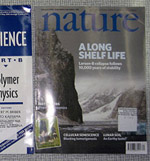Mitigation transforms streams and wetlands at landscape level
 Freshwater,
Freshwater,  Wetland
Wetland Wetland mitigation programs have aroused a fair bit of controversy in the conservation community in the United States. Under state and federal laws, anyone impacting wetlands is required to compensate by preserving, restoring, and/or creating similar habitat to achieve a no-net-loss.
A new study indicates that these programs may actually alter the overall distribution of streams and wetlands across the landscape and consequently modify their function with both negative and positive consequences.
Past studies I have encountered on this topic have primarily raised concerns about whether individual mitigation projects are fully compensating for wetlands lost to development and complying with regulatory permits. Todd BenDor and fellow researchers from the University of North Carolina take an innovative approach to the mitigation issue from a couple different perspectives.
First of all, the study looks at streams while most mitigation research has focused entirely on wetlands. Second, while most past research has evaluated the succeess of individual projects, this study looks at the cummulative effects that a mitigation program has on a landscape.
The study looked at geospatial data collected on the North Carolina Ecosystem Enhancement Program - a type of statewide mitigation bank in which restoration and creation projects are done in advance and credits are sold later in the marketplace to permittees looking to meet their requirements.
The researchers found the following landscape-level trends from this program:
1) Loss of place specific functions - Streams and wetlands were relocated from urban to rural areas. This can lead to a loss of functional equivalence. For example, wetlands likely play different roles in urban areas where there is much greater area of impervious surfaces than rural locations. Similarly, there was a cluster of impacts on the Outer Banks - highly erodible barrier islands - but corresponding mitigation was concentrated in other areas. Overall, mitigation sites were often far from the area of impact - sometimes in different watersheds.
2) A movement upstream in the watershed - There was a preference to restore streams and wetlands farther upstream in the watershed than the impacts for which they compensate. This is problematic because ecosystem functions downstream are likely to be distinct from those upstream.
3) Defragmentation - Numerous small impacts to streams and wetlands were mitigated by a few large restoration and creation projects. This concentration of habitat from smaller scattered pieces into concentrated blocks has advantages for many species and is generally considered by many in conservation to be one of the positives of the market based approach of mitigation banking. However, it goes hand-in-hand with trend #1 which is negative.
During their data gathering for the study, the researchers also found major administrative problems with the mitigation programs - much of the standard information they were looking for was missing from records.
One of the take home messages from this study is that market-based mitigation programs like the one profiled in North Carolina have tradeoffs with respect to ecological, temporal, and spatial qualities. For example, from an ecological perspective, there are clearly advantages to mitigating with fewer large scale restoration projects versus numerous smaller projects, but there are disadvantages as well.
From a spatial perspective, it is preferable to do mitigation closer to the impact site. But setting narrow geographic requirements may create disincentives for mitigating multiple small impacts through individual, larger-scale restoration projects.
These tradeoffs clearly need to be more carefully studied by researchers and more thoughtfully considered by policy makers if stream and wetland mitigation programs hope to comply with the stated intentions of state and federal laws.
--Reviewed by Rob Goldstein
BenDor, T., Sholtes, J., & Doyle, M. (2009). Landscape characteristics of a stream and wetland mitigation banking program Ecological Applications, 19 (8), 2078-2092 DOI: 10.1890/08-1803.1




Reader Comments